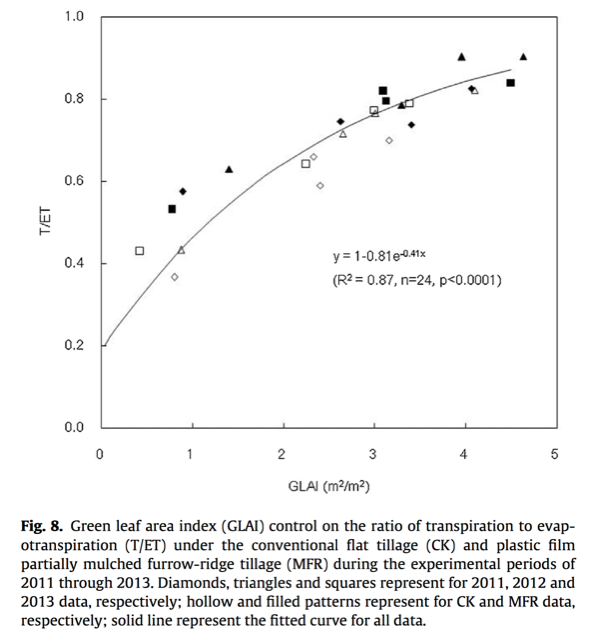Comparison of multi-level water use efficiency between plastic film, partially mulched, and non-mulched croplands at eastern Loess Plateau of China

Daozhi Gong, Xurong Meia, Weiping Haoa, Hanbo Wang, Kelly K. Caylor (2017) “Comparison of multi-level water use efficiency between plastic film, partially mulched, and non-mulched croplands at eastern Loess Plateau of China”, Agricultural Water Management, doi:10.1016/ j.agwat.2016.06.006.
Abstract: Multi-level crop water use efficiency, i.e. ratio of productivity to water use at canopy, ecosystem, biomass, grain yield and net biome production (NBP) levels, is essential for evaluating water productivity and footprints of agronomy technologies and may vary with different methods of dryland tillage. This study investigated their changes under two tillage methods: conventional flat tillage without mulching (CK) and plastic film partially mulched furrow-ridge (MFR) for three years through synchronous measurements of two eddy covariance systems with multi micro-lysimeters on the eastern Loess Plateau of China. Water flux linearly correlated to canopy assimilated CO2 and net ecosystem CO2 exchange at half-hourly and daily scales, and also to biomass increments at seasonal scale with significant levels for both treatments for all three years. At canopy level, the slopes for these correlations in MFR were very close to those of CK for three years. However, the absolute slopes for these correlations in MFR were always higher than those of CK at ecosystem and biomass levels. Seasonal water use efficiency significantly changed with green leaf area index (GLAI) at ecosystem but not canopy and biomass levels. During three whole growing seasons, average water use efficiency in MFR were higher by 24.4%, 36.7%, 29.3% and 25.7% than those of CK at ecosystem, biomass, grain and net biome production levels, respectively. These results demonstrated that MFR can significantly enhance water use efficiency at ecosystem, biomass, grain and NBP levels except for canopy level, which should help sustainable crop production with minimum water footprints in water-limited environment.
